Context
Research assistant in Problemata‘s editorial team
Subject
Publishing in design research: help and support for researchers, content and progress management, text selection, proofreading, editing, search and application for rights (texts and iconography), indexing, publication (omeka, massive writter with markdown writing, django)
Credits
© Laëtitia Molinari
© Marie Lejault and Catherine Geel (Problemata)
with
© Sébastien Dégeilh, Olivier Huz and Pauline Duret (isdaT)
© Brice Domingues (officeabc)
© Véronique Marrier (CNAP)
Location
Paris and Toulouse
Date
2023
Editorialisation of two design research lines – Problemata
Problemata is a platform for publishing lines of research organized around a theme in the design disciplines. With historical or historicized perspectives, a line of research is composed of articles (texts) and resources (images). I was in charge of the editorial process for two lines of research, as well as writing a note introducing Julien Lelièvre’s photographic work Art d’Autoroute, carried out from 2009 to 2015.
The first line of research, entitled “design, interiors, identities”, addresses the relationship in Europe to the home, interior design, domestic interiors, furniture, decoration, function and, more profoundly, to identities integrated, developed or detached in relation to spaces and places. From Louis XIV through the Victorian era to the contemporary era, the line offers a range of studies focusing mainly on the modern period. How, according to period, style and need, can interior design, by setting the scene for our society, bear witness to the evolution of our lifestyles as a more or less voluntary and assertive extension of our identities? All texts are taken from Raddar n°2, co-published by T&P Work Unit and the Mudac in 2020.
The second search line is entitled « Vus à 130. Roads, graphics, regions. Mise en tourisme de paysages autoroutiers et de sites en France, 1972-2022. » It tackles questions of the tourism of the French territory, of the relationship to landscape, to the genius of places and to motorway culture, through the entry point of graphic design. The panels for tourist and cultural events, or “brown panels”, designed by the Atelier Visuel Design Jean Widmer, Pierre Bernard, Philippe Collier… are the entry point for this line of research. Over and above the aesthetic values attributed to them or the content they convey, these images, intended to be seen at 130 km/h, act as an interface between the regions the motorist passes through and the freeway that distances him from the real experience of these regions. The Genius loci research program team at the Institut supérieur des arts et du design de Toulouse has updated various archives, texts and historical studies, and taken a forward-looking approach to show how graphic design has accompanied the development of tourism in France since the 19th century, from the first sketches of animated signage in 1972 to the acquisition of Jean Widmer’s archives by the Centre national des arts plastiques.
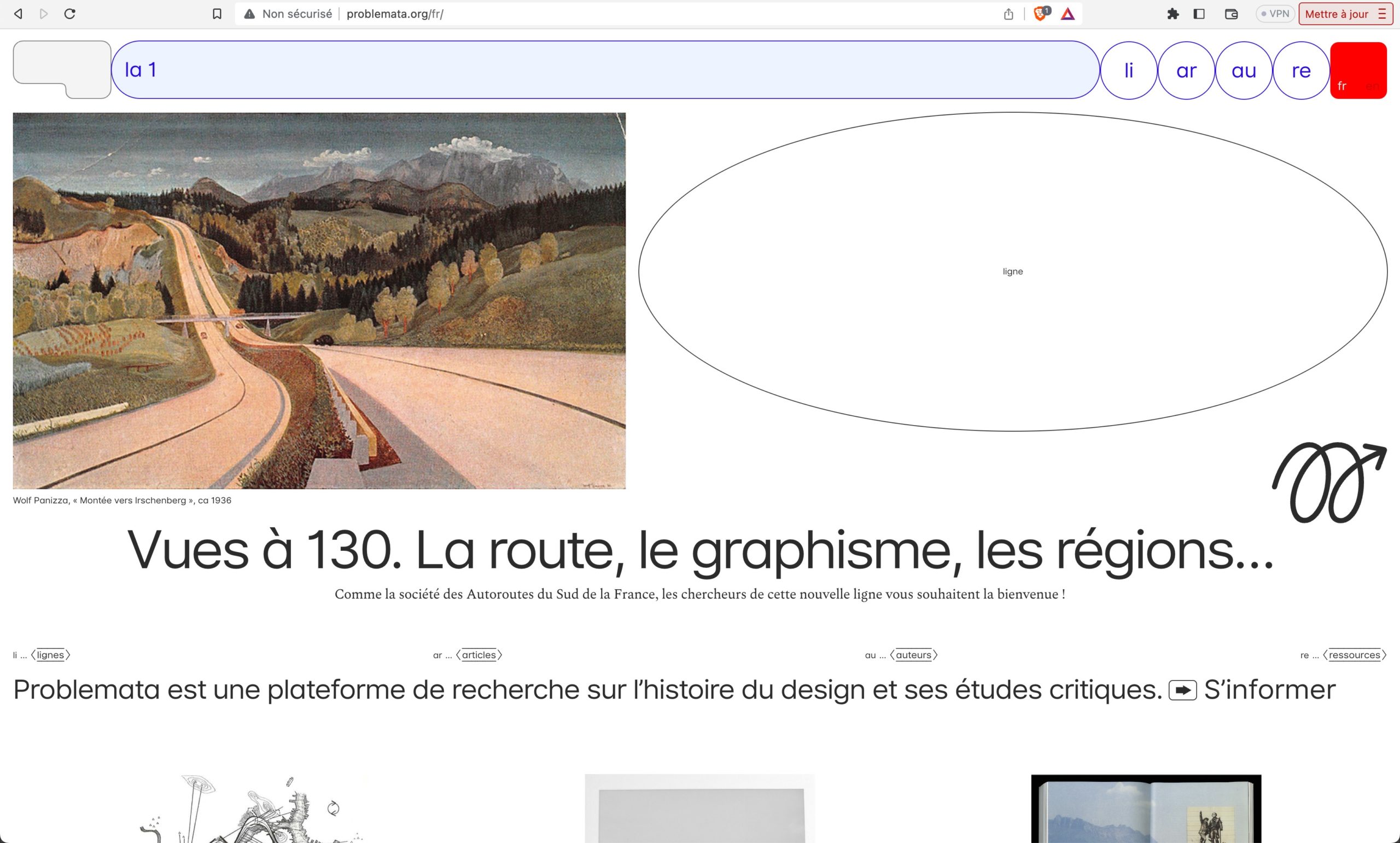

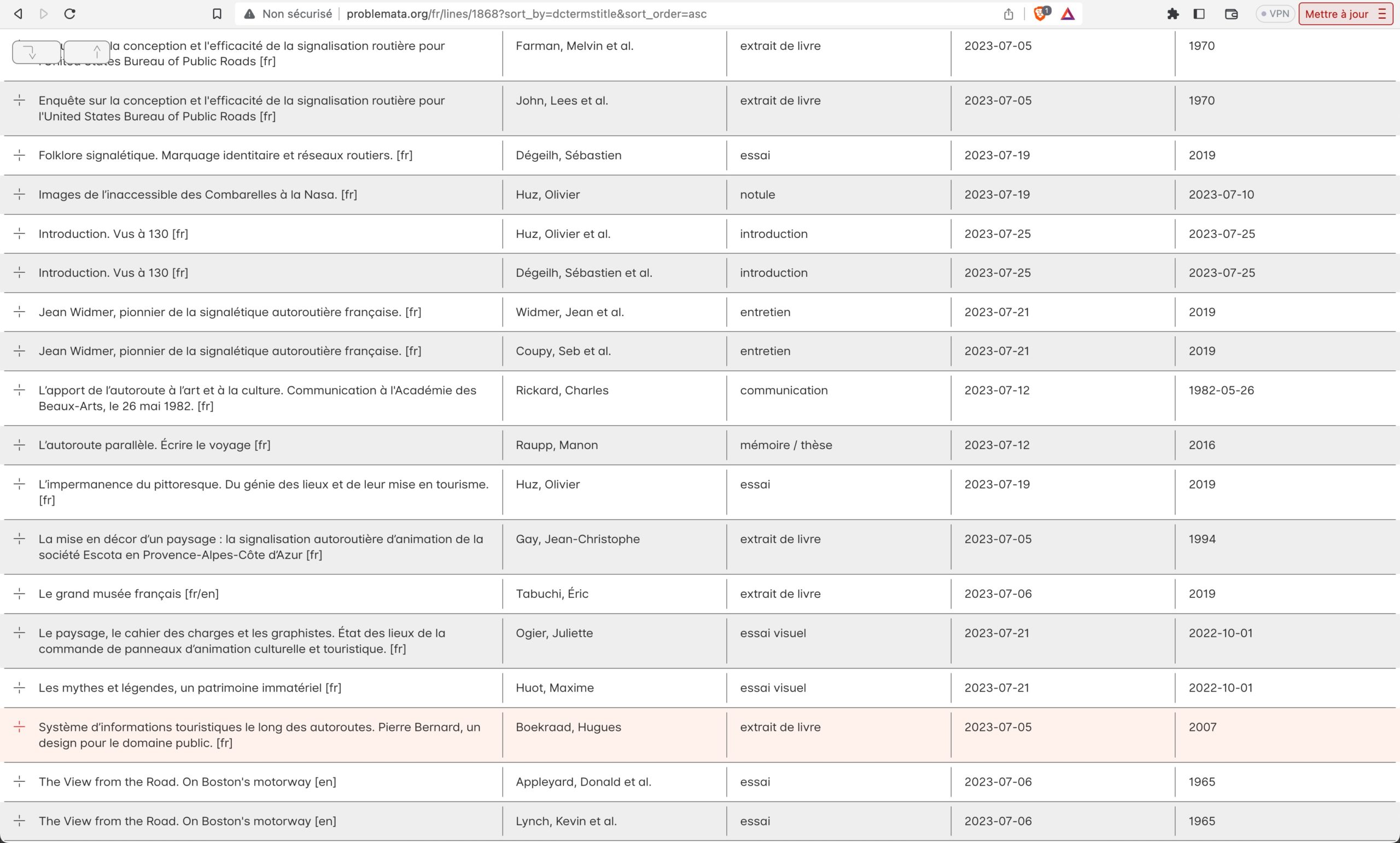
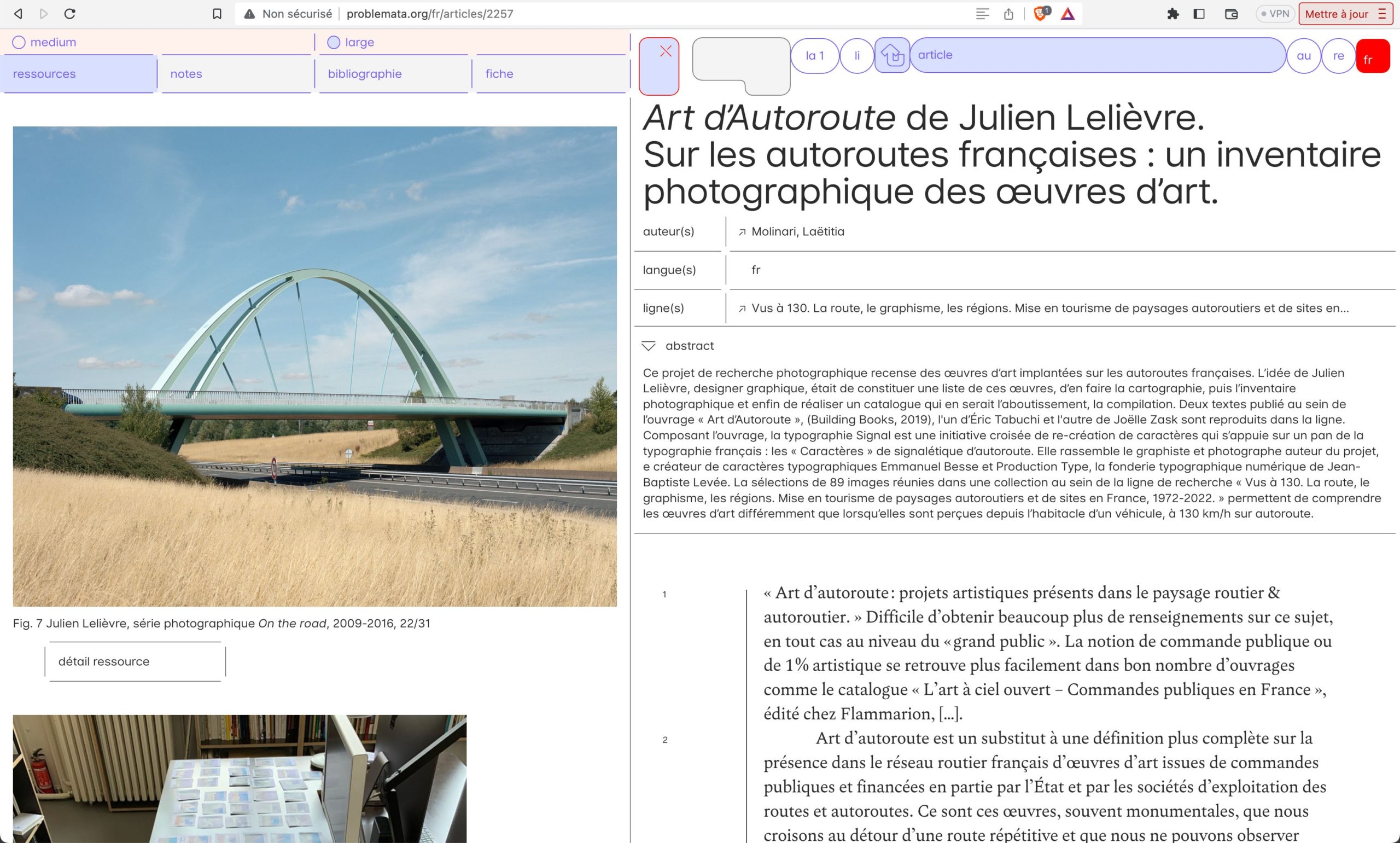

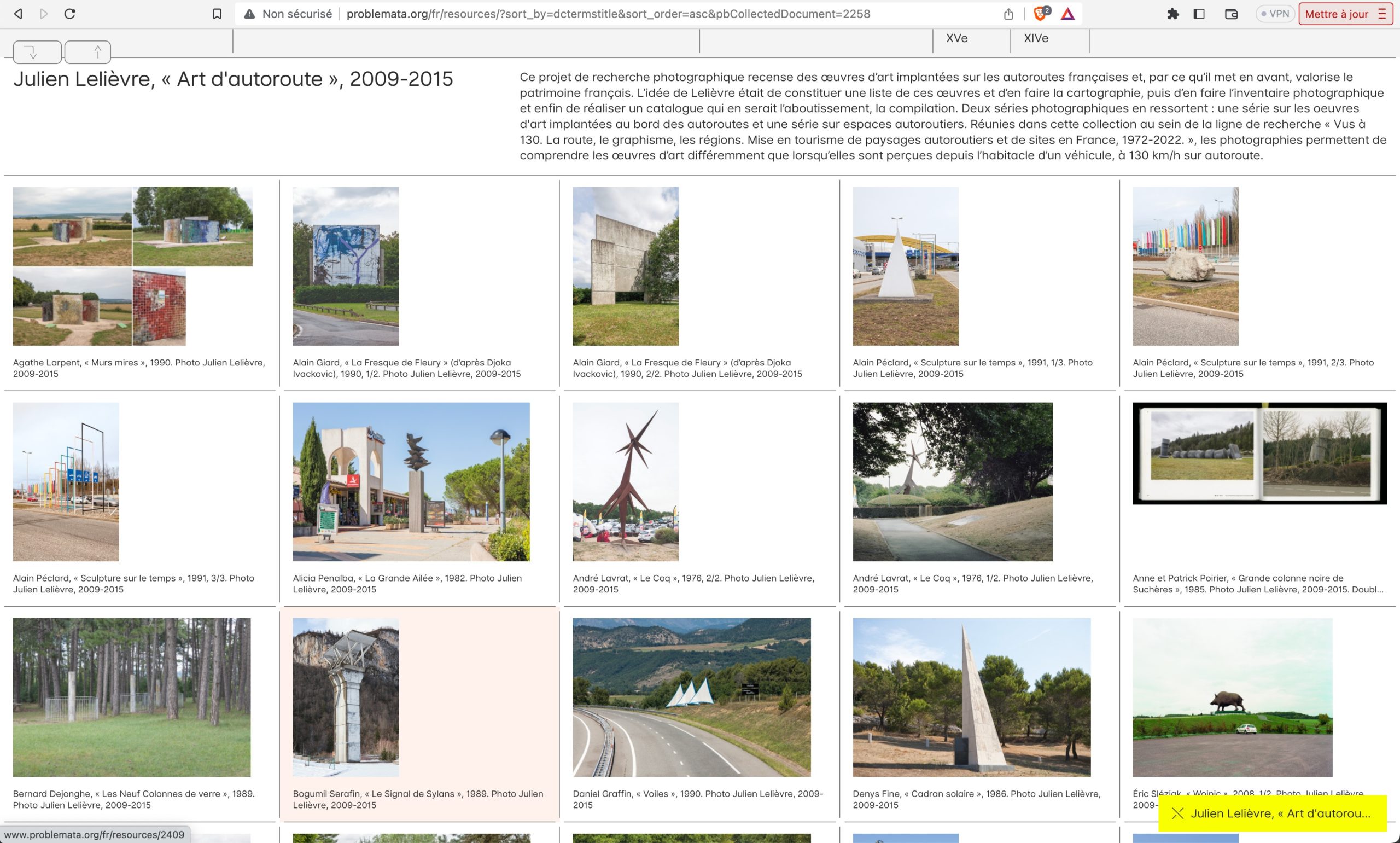
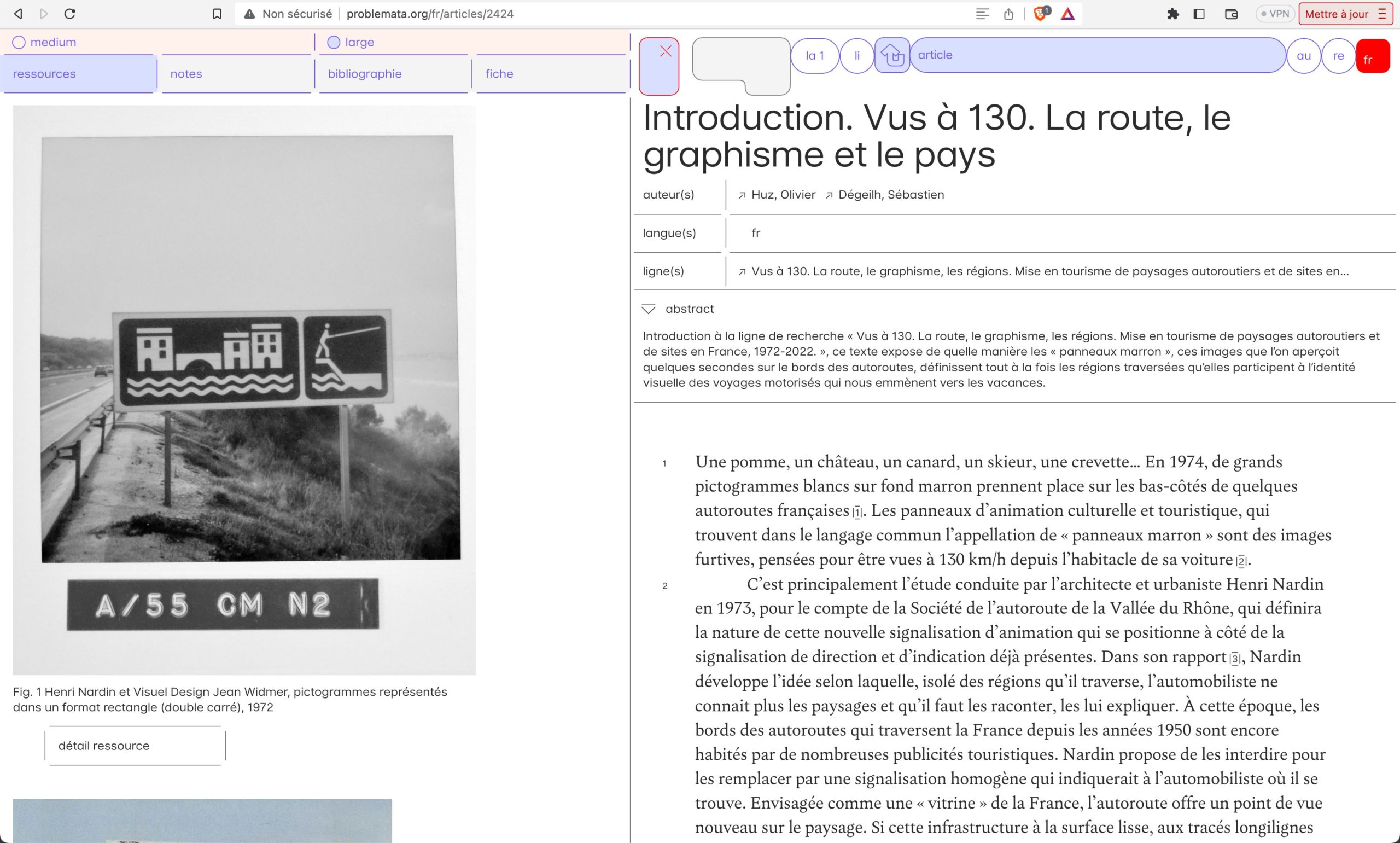
Paris, 2025 © Laëtitia Molinari
